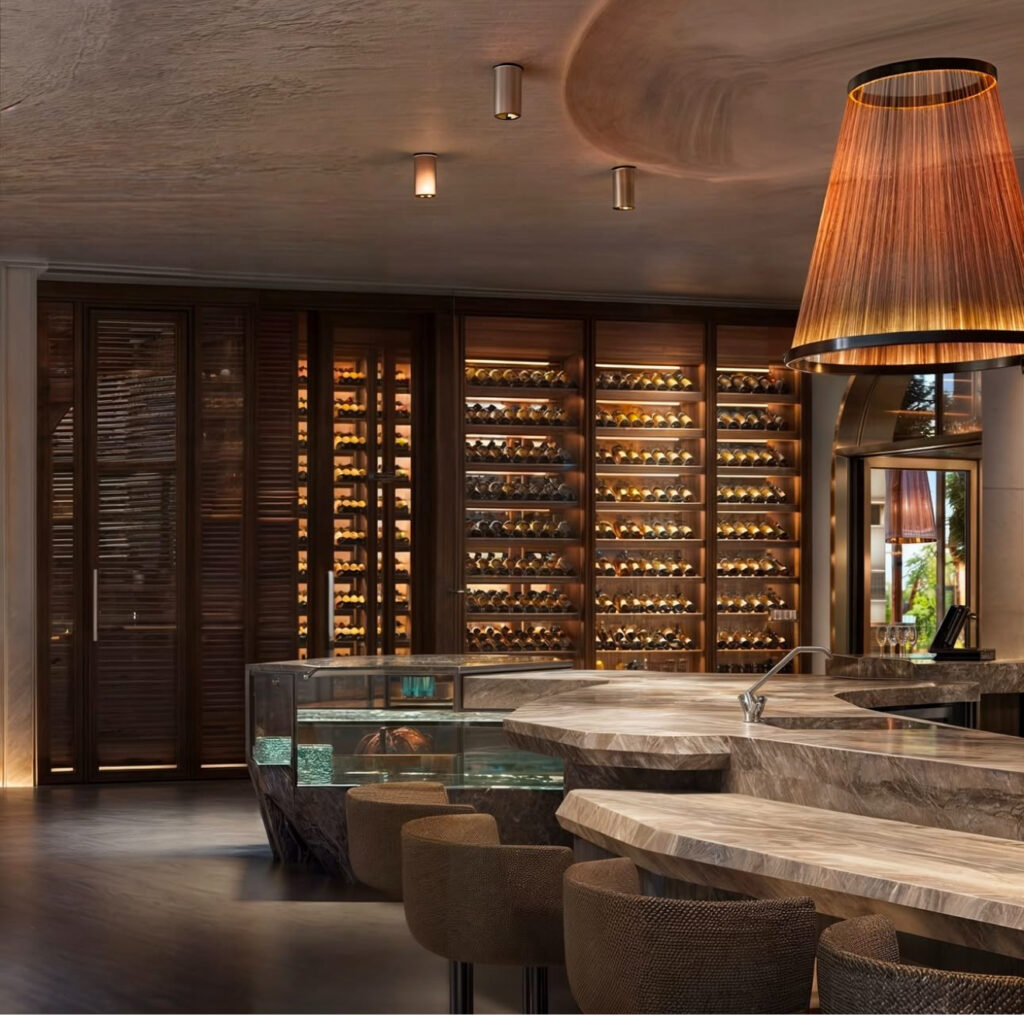Creating a custom wine cabinet involves several considerations to ensure it meets your needs and protects your wine collection. Here are the main concerns to keep in mind:
1. Temperature Control
• Wine requires a stable temperature, ideally between 45°F and 65°F (7°C to 18°C), with 55°F (13°C) being optimal for most types.
• Consider integrating a cooling system if the cabinet will be in a warm or fluctuating environment.
2. Humidity
• Wine needs a relative humidity of 50-70% to prevent corks from drying out and wine from oxidizing.
• Incorporate materials or a system that maintains appropriate humidity levels.
3. Vibration
• Minimize vibrations, as they can disturb the sediment in wine, affecting its quality.
• Use vibration-dampening materials and avoid placing the cabinet near appliances or machinery.
4. UV Protection
• UV light can degrade wine and affect its taste.
• Use tinted or UV-resistant glass if the cabinet has a display window, or opt for solid, opaque doors.
5. Ventilation
• Proper airflow is necessary to prevent mold and maintain consistent conditions.
• Ensure adequate ventilation around the cabinet, especially if it houses a cooling system.
6. Storage Orientation
• Store bottles horizontally to keep the cork moist and ensure an airtight seal.
• Design shelves to securely cradle bottles of various sizes.
7. Material Selection
• Use durable, moisture-resistant materials like hardwoods, metal, or treated plywood.
• Avoid materials with strong odors that could seep into the wine.
8. Size and Capacity
• Consider how many bottles you plan to store and allow for future expansion.
• Account for different bottle sizes, such as Champagne or magnums.
9. Aesthetics and Design
• Match the cabinet design with your home’s interior style.
• Decide whether the cabinet will be a focal piece or discreetly blend into the surroundings.
10. Security
• If your collection is valuable, consider locks or other security measures to protect it.
11. Budget
• Determine your budget early, as cooling systems, materials, and custom designs can vary significantly in cost.
12. Lighting
• Use soft, LED lighting to showcase your collection without generating heat or UV exposure.
13. Location
• Place the cabinet away from direct sunlight, heat sources, and areas with frequent temperature fluctuations.
Planning these aspects carefully will ensure that your custom wine cabinet is both functional and aesthetically pleasing, while also protecting your wine collection. One of the most important aspects overlooked is the after sales service – what is the warranty and do you have local service support?

